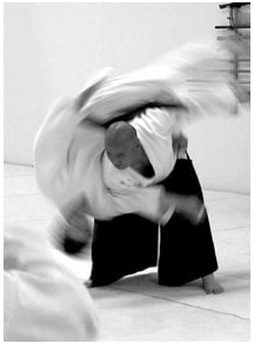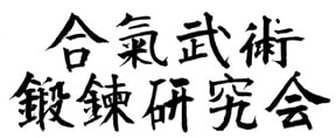
Aikidō (合気道) and Aikibujutsu (合気武術) are empty-handed arts in which one utilizes, rather than opposes, the energy or force of an opponent's attack through techniques such as throws and controls. Aikidō and aikibujutsu methods do not rely on the use of force against force, but instead involve blending with the opponent's energy and redirecting or diffusing it, resulting in a less destructive (and less effortful) method of overcoming an enemy. These arts also incorporate a study of human anatomy, and take advantage of joints, balance, pressure points and nerve meridians, and other natural vulnerabilities of the body in order to equip one to over come even a much stronger enemy. Such methods are employed by law enforcement agencies around the world, as effective use of aiki methods can facilitate the de-escalation of violence and the arrest of criminals while inflicting the least amount of bodily injury.
The concept of aiki (合気) is generally understood as the confluence or harmonizing of ki (気; vital energy) between two persons, such as an attacker and a defender in a combative context. Aikidō can be translated as "the way of harmonizing ki"; aikibujutsu can be translated as "martial methods and techniques of harmonizing ki."Aiki is manifested in martial arts practice as the blending of opposing movements and energies; using aiki methods, a skilled practitioner can harness, control, and subdue these energies as needed. Aiki instruction incorporates extensive taisabaki (体捌き; body movement), ashisabaki (足捌き; footwork), as well as kumite (組手; paired exercises), jiyūwaza (自由技; free sparring against single or multiple opponents), and a diversified curriculum of effective techniques.
